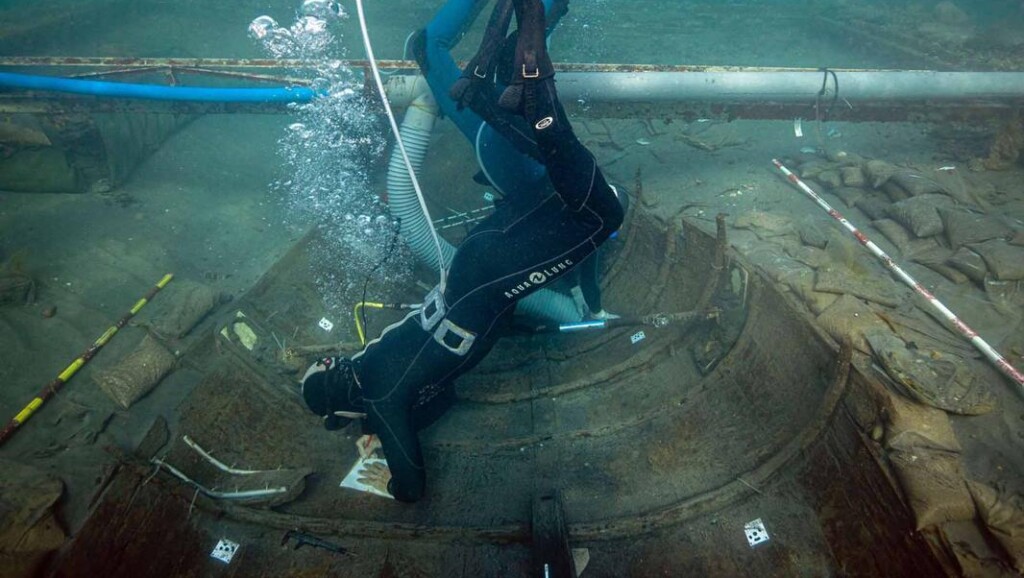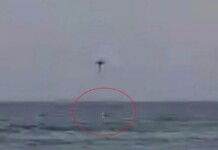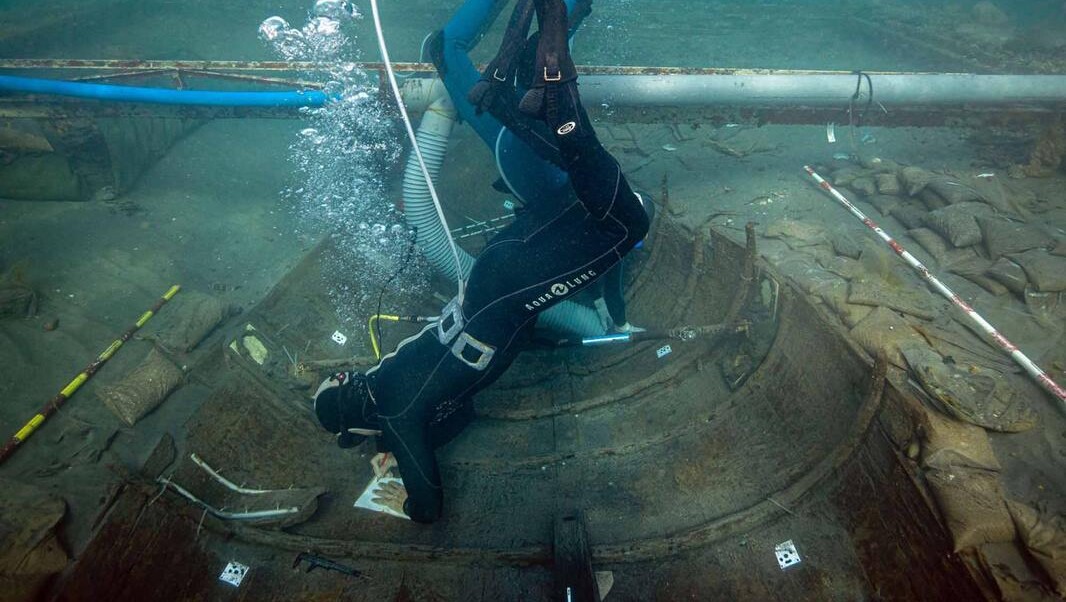
The famous king of Babylon Nebuchadnezzar II was lately enthroned when a group of Phoenician sailors watched their boat sink in shallow water off the coast of Spain.
Now, that very boat is the subject of an underwater archaeology expedition, as experts prepare to extract it for study and eventual museum placement.
The sailors would have been beside themselves watching the boat go down in just 7 feet of water, but before they could recover it and bring it to the shore around 65 yards away, a storm suddenly descended on La Playa de la Isla in the town of Mazarron, southeastern Spain.
The storm buried it in sand and silt, entombing it in a remarkable state of preservation for 2,600 years, and that has now allowed archaeologists and historians at the University of Valencia to get a fantastic insight into the Mediterranean’s first great sailing culture.
“The wreckage can no longer remain where it is because its sand protection is now disappearing,” said Carlos de Juan, an archaeologist at the University of Valencia who led the excavation project, in a July 2024 statement.
“The wreckage has survived for centuries, but now it is time to roll up our sleeves and ensure that we can continue to enjoy this asset of cultural interest.”
Dubbed Mazarron II, she was extracted from the sea in twenty parts and taken to the laboratories of the Cartagena National Museum of Underwater Archaeology for reconstruction
Laden with a cargo of lead ingots, she will not only offer an insight into the shipbuilding techniques of the Phoenicians but also their metallurgical sophistication.
“It will tell us what types of wood were used to build the boat, where it was built, what navigation was like at the time, the degradation processes of the wood, the contamination that may have occurred in shallow waters,” said Agustín Díez, a historian at the University of Valencia who also worked on the project, in the statement.
The first step in preservation will be to extract the corrosive salt, replacing it with a resin that will fill all the hollows and cracks in the wood to ensure it doesn’t immediately rot away.
OTHER SHIPWRECKS: Archaeologists Uncover 900 Ming Dynasty Artifacts From Shipwrecks in South China Sea
The Phoenicians thrived during the Middle and Late Bronze Age. Originating in modern-day Lebanon in early antiquity, the Semitic-speaking sailors hailed from important city-states like Sidon, Tyre, and Byblos in Lebanon, and expanded across the Mediterranean, founding cities like Cadiz in southwestern Spain and Carthage in North Africa.
MORE ANCIENT ARCHAEOLOGY: Greek Archaeologists Use The Iliad as a Map to Find 10 Ancient Shipwrecks
In an era when brutal conquest and depopulation were standard foreign policy methods, the Egyptians, Assyrians, Babylonians, and Persians all treated the Phoenician city-states with surprising gentleness, not wanting to too greatly traumatize what was the ancient world’s equivalent of the goose that laid the golden egg.
The trading connections, knowledge of sailing, and skilled shipwrights protected these progenitors of the Greek alphabet from undue violence for centuries, until their culture vanished under the hegemony of Rome.
WATCH the extraction in action…
SHARE This Aquatic History Lesson With Your Friends Who Love Such Things…




















